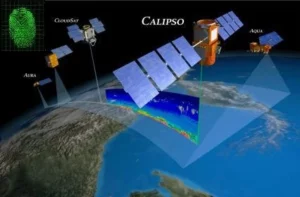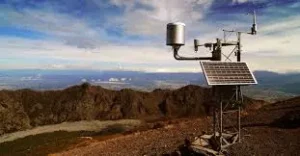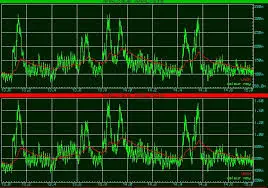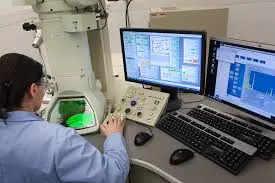Laboratoire de Recherche d'Analyse & Modélisation des Phénomènes Aléatoires (Random Phenomena Analysis & Modeling Research Laboratory)
LAMPA Laboratory
Our teams
TEAM 01: PREDICTION OF ATMOSPHERIC PARAMETERS USING SATELLITE IMAGES
Team leader: Pr AMEUR Soltane
Description of the team's research theme: The research program addresses issues related to  environment, renewable energies and agriculture, as well as climate change. The theme of this program is Prediction and estimation of atmospheric parameters using satellite image processing. The program comprises three main activities. The first involves the compression of multispectral images, the second the estimation and forecasting of precipitation in northern Algeria using data from the SEVIRI/MSG (SpinningEnhanced Visible and Infrared Imager) radiometer, and the third the evaluation of the solar potential actually available on an hourly and daily scale in Algeria.
environment, renewable energies and agriculture, as well as climate change. The theme of this program is Prediction and estimation of atmospheric parameters using satellite image processing. The program comprises three main activities. The first involves the compression of multispectral images, the second the estimation and forecasting of precipitation in northern Algeria using data from the SEVIRI/MSG (SpinningEnhanced Visible and Infrared Imager) radiometer, and the third the evaluation of the solar potential actually available on an hourly and daily scale in Algeria.
The research work is divided into three aspects: experimental, theoretical and applied
In the experimental aspect, two projects were carried out:
- Setting up measuring instruments; lidar, radar and radiometer based on ground and satellite data.
- Development of an autonomous station for acquiring meteorological parameters, an anemometric sensor, and techniques for archiving msg images.
The theoretical aspect contains :
- Development of a multi-source algorithm for rainfall mapping.
- Compression of weather images by fractal coding in the wavelet domain based on block classification.
- Image registration applied to precipitation estimation.
- Analysis of climate variability using Météosat Seconde Génération "MSG" images.
- Image compression by SPIHT applied in the integer wavelet domain: Application to MSG images
The application of the research program can be summarized as follows:
- Calculation of pollution levels in the wilaya of Tizi-Ouzou using LIDAR and photometer atmospheric sounding: Application also to determining the impact of aerosols on the radiation balance in the Tizi-Ouzou region.
- Application of models developed in the laboratory to predict atmospheric parameters and their variability over the national territory, at the level of the National Meteorological Office (ONM).
- Application of estimation products developed to map precipitation fields on the national territory used in agriculture.
- Application of Markov chains for precipitation analysis and forecasting to help combat drought.
Meteorological instrumentation and modeling
Team leader: Dr LAGHROUCHE Mourad 
Keyword:
Description of the team's research theme:
ADVANCED SIGNAL PROCESSING TECHNIQUES
Team leader: Dr HADDAB Salah 
Keyword:
Description of the team's research theme: The main objective of our team is to implement and exploit various signal processing tools and adapt them to the needs of the laboratory, with particular interest in biomedical signals, for which an acquisition system has been designed and a database established, Various problems have been solved, such as ambulatory acquisition, wireless transmission and processing of electrocardiographic (ECG) and electrophotographic (EGG) signals, wireless transmission and processing of electrocardiographic (ECG) and electrophotographic (EGG) signals, notions of remote monitoring and embedded systems, and various techniques for analyzing and classifying received signals. fuzzy logic, neural networks and SVMs. In addition, work is in progress on the processing of electroencephalographic (EEG) signals, the analysis and processing of vibration noise in micromanipulation systems, and the implementation of an FPG-based processing system.
Image analysis
Team leader: Pr AMEUR Zohra
Keyword:
Description of the team's research theme:The aim of image analysis is to provide a quantitative description of the image or shape recognition.
Image analysis encompasses several disciplines, which we classify into two categories: low-level processes, which require very little information about image content, such as filtering, image enhancement and image restoration.High-level processes, which operate downstream of low-level processes and require information about image content, are three-dimensional reconstruction, pattern recognition and cognitive processes in general.Image processing is a vast field of research, with a wide range of applications, including medical imaging, satellite imaging, renewable energies and meteorological phenomena. When we design an image processing algorithm, we are guided by our own visual perception.Our research team is focused on fundamental approaches to image segmentation and analysis, and we are particularly interested in developing segmentation methods and modeling methods;the main research objectives of our project are part of a scientific approach that consists, in general, of developing acquisition and processing tools for the analysis of random phenomena.
